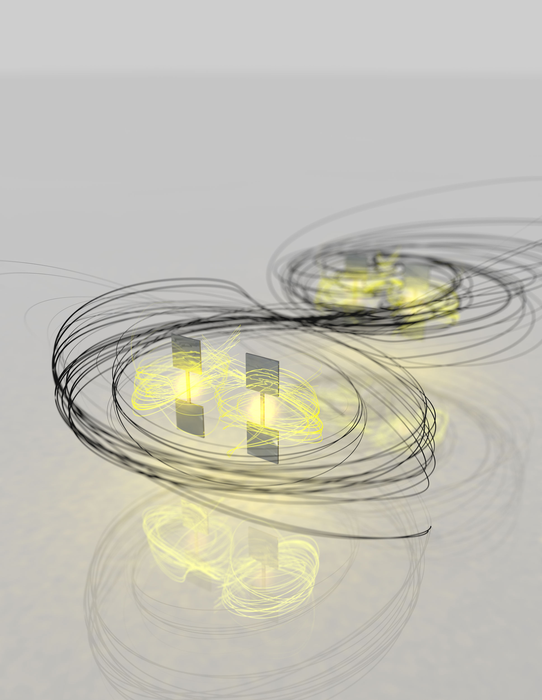Superconducting quantum bits have been coupled with waveguides at Gerhard Kirchmair’s laboratory at the Austrian Academy of Sciences’ Institute of Quantum Optics and Quantum Information (IQOQI) in Innsbruck, Austria. When many quantum bits are inserted into the waveguide, they react with one another, leading to black states.
 A team led by Gerhard Kirchmair has developed a system with which the dark states of superconducting circuits in a microwave waveguide can be manipulated from the outside. Image Credit: Mathieu Juan/University of Sherbrooke.
A team led by Gerhard Kirchmair has developed a system with which the dark states of superconducting circuits in a microwave waveguide can be manipulated from the outside. Image Credit: Mathieu Juan/University of Sherbrooke.
These are entangled quantum states that are completely decoupled from the outside world. They are invisible, so to speak, which is why they are called dark states.
Max Zanner, Study First Author, Institute for Experimental Physics, University of Innsbruck
These states are attractive for quantum simulations and quantum information processing, and various ideas have been presented in recent years. However, until now, it has been impossible to effectively manage and regulate these dark states without destroying their invisibility.
Now, a team led by Gerhard Kirchmair has created a device that can alter the dark states of superconducting circuits in a microwave waveguide from outside.
Expandable as Desired
Until now, the problem has always been, how to control dark states that are completely decoupled from the environment. With a trick, we have now succeeded in finding access to these dark states.
Gerhard Kirchmair, Professor, Experimental Physics, University of Innsbruck
Four superconducting quantum bits were placed into a microwave waveguide, with control lines attached through two lateral inlets. The dark states may be altered by sending microwave radiation across these lines.
The four superconducting circuits produce a durable quantum bit with a storage time 500 times that of the individual circuits when used together. In this quantum bit, many dark states exist simultaneously, which may be exploited for quantum simulation and quantum information processing.
“In principle, this system can be extended arbitrarily,” adds Matti Silveri of the University of Oulu’s Nano and Molecular Systems Research Unit, Finland.
The efficient experiment serves as a springboard for more research into dark states and their potential uses. For now, they are mostly in the area of fundamental research, where many concerns about the nature of quantum systems remain unanswered. The control of dark states notion established by the scientists in Innsbruck can theoretically be applied not only with superconducting quantum bits but also on various technological platforms.
However, the circuits we use, which function like artificial atoms, have advantages over real atoms, which are much more difficult to couple strongly to a waveguide.
Gerhard Kirchmair, Professor, Experimental Physics, University of Innsbruck
The findings were reported in the current edition of Nature Physics. The Austrian Science Fund FWF, the Academy of Finland, and the European Union, among others, contributed to the research. At the University of Innsbruck, Maximilian Zanner and Christian Schneider are participants of the FWF Doctoral Program Atoms, Light, and Molecules (DK-ALM).
Journal Reference:
Zanner, M., et al. (2022) Coherent control of a multi-qubit dark state in waveguide quantum electrodynamics. Nature Physics. doi.org/10.1038/s41567-022-01527-w.